Ireland
Development challenges as investment and business opportunities: Ireland’s policy and practices
Ireland’s policy for international development – One World One Future – identifies trade and economic growth as a priority area for action. This includes developing an Inclusive Economic Growth policy and committing to the continued implementation of the Africa Strategy for the Department of Foreign Affairs and Trade (September 2011).
Substantive engagement with the private sector is a relatively new policy direction for Irish Aid. Its Inclusive Economic Growth Policy will be adopted in 2016 and will include a component on private sector development. Work on the policy in 2015 focused on the poorest/most excluded from economic growth, typically smallholder agricultural producers and the markets and commodities that they depend on, and how social protection mechanisms can be used to stimulate private productive investment in and for the poorest sectors of the economy.
Financial flows from Ireland to developing countries
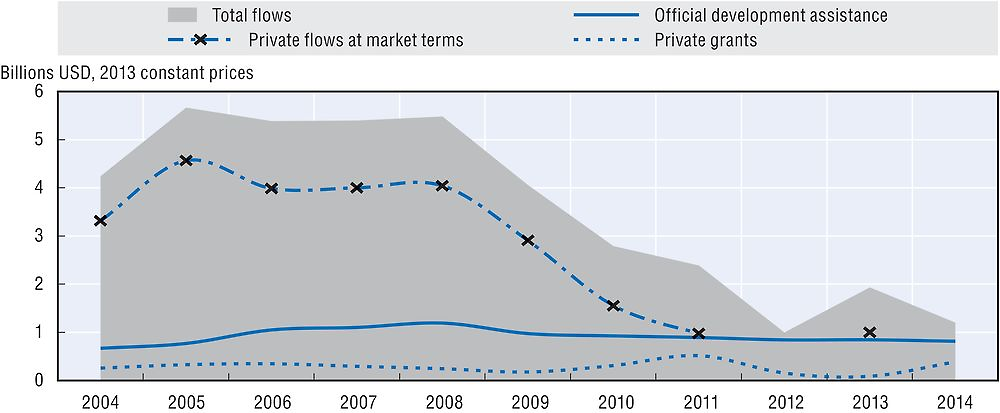
Note: Data on other official flows are not available; data on private flows are not available for 2012 and 2014.
Ireland uses ODA to mobilise other resources for sustainable development
-
Ireland contributes to the mobilisation of domestic resources in developing countries by supporting their tax systems. In 2014, it is estimated that Ireland committed USD 265 000 of its official development assistance (ODA) to tax-related activities in partner countries.
-
It promotes aid for trade to improve developing countries’ trade performance and integration into the world economy. It committed USD 49.5 million (10.6% of its bilateral allocable ODA) to trade-related activities in 2014, an 8.6% decrease in real terms from 2013. The trend has been fluctuating over the past few years.
-
Ireland has pledged USD 2 million (EUR 2.7 million) to the Green Climate Fund, which plays a key role in channelling resources to developing countries and catalysing climate finance at the international and national levels. Ireland will continue to support the Least Developed Countries Fund (LDCF), and will provide – subject to budget approval – at least USD 6.4 million (EUR 6 million) by 2020. The LDCF addresses urgent and immediate adaptation needs and supports national adaptation planning processes to reduce medium and long-term vulnerability to the impacts of climate change.
Ireland’s official development assistance
In 2015, Ireland provided USD 718 million in net ODA (preliminary data), which represented 0.36% of gross national income (GNI) and a 1.9% increase in real terms from 2014. Ireland is the 12th largest Development Assistance Committee (DAC) in terms of ODA as a percentage of GNI, and the 19th largest in terms of volume. In its budget statement for 2016, the government increased, for the first time in seven years, the ODA budget. Ireland, like other EU member countries, made a new commitment to meeting the 0.7% ODA/GNI target by 2030. Its share of untied ODA (excluding administrative costs and in-donor refugee costs) was 98% in 2014 (down from 100% in 2013 and 2012), compared with the DAC average of 80.6%. The grant element of total ODA was 100% in 2014.
Ireland reported USD 0.3 million of its in-donor refugee costs as ODA in 2014. These costs represented 0.04% of its total net ODA.
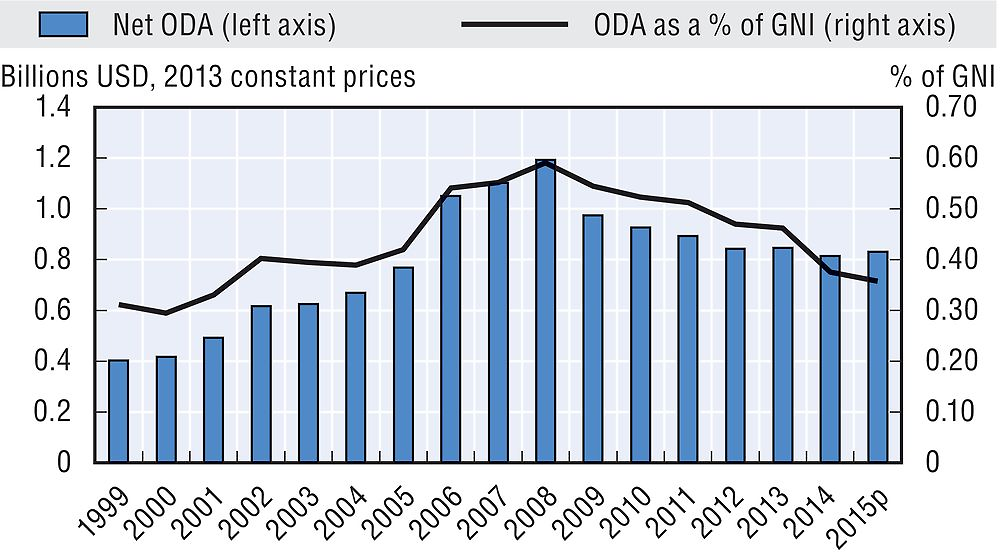
In 2014, 63.6% of ODA was provided bilaterally. In 2014, Ireland allocated 36.4% of total ODA as core contributions to multilateral organisations, compared with the DAC country average of 28.3%. In addition, it channelled 19.4% of its bilateral ODA for specific projects implemented by multilateral organisations (multi-bi/non-core contributions).
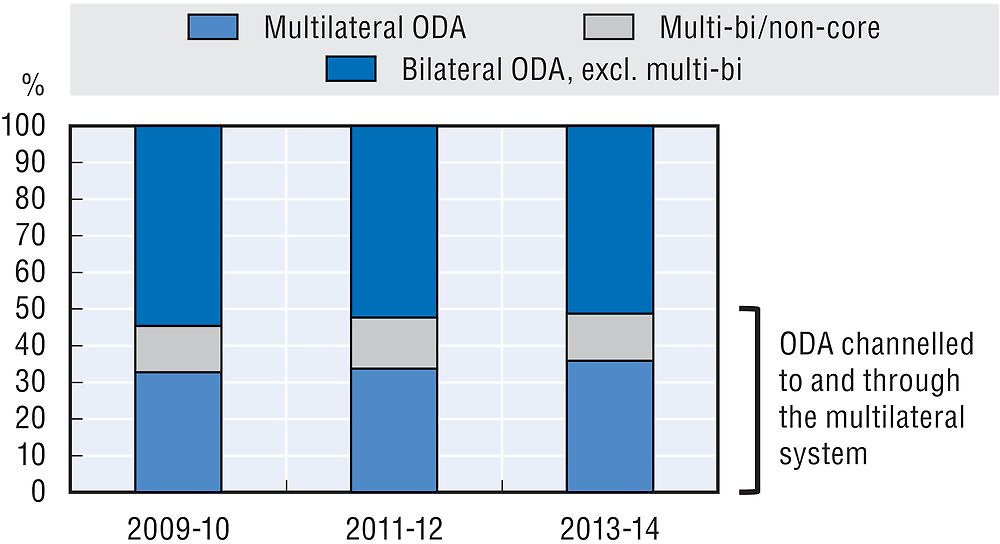
In 2014, 42.2% of bilateral ODA was programmed at partner country level. Ireland’s share of country programmable aid (CPA) was lower than the DAC country average (52.9%); 51% of its CPA consisted of project-type interventions. Core aid to non-governmental organisations (NGOs) and humanitarian assistance accounted for almost half of bilateral ODA.
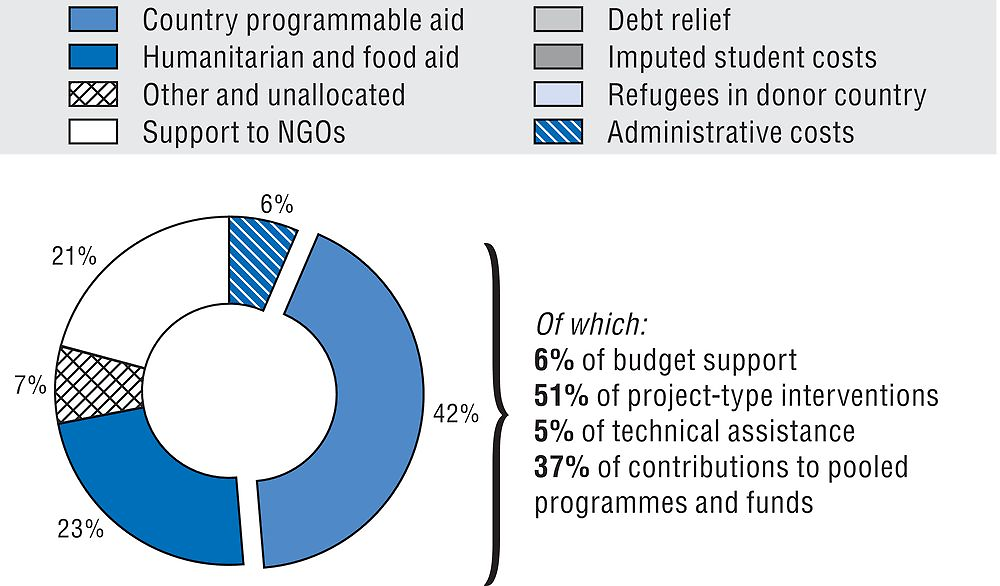
In 2014, USD 222.3 million of bilateral ODA was channelled to and through civil society organisations (CSOs). This equalled 42.8% of bilateral ODA, compared with the DAC average of 17.4%. Between 2013 and 2014, Irish aid channelled through and to CSOs increased, both in volume (+6.7%) and as a share of bilateral aid (from 40.3% to 42.8%).
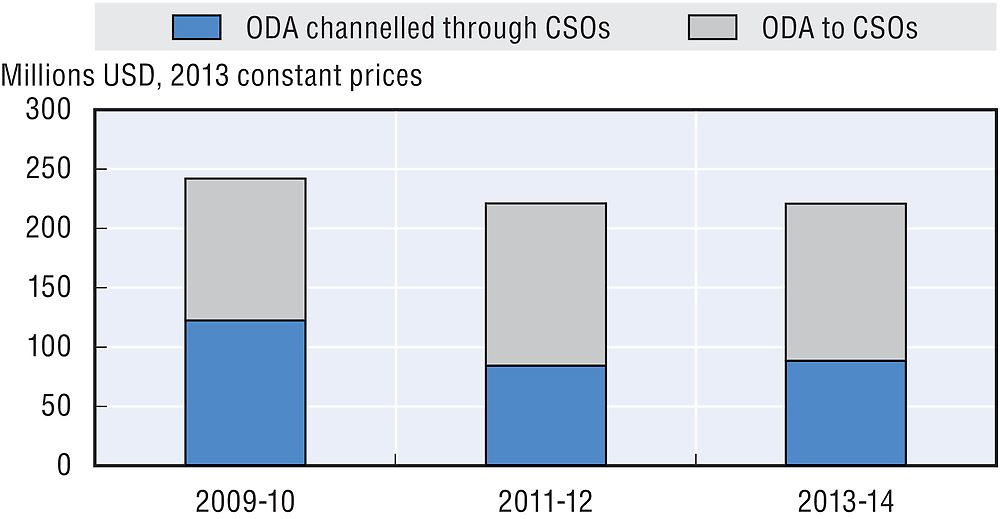
Bilateral ODA was primarily focused on sub-Saharan Africa. In 2014, Ireland allocated USD 340.1 million to sub-Saharan Africa, USD 30.1 million to the Middle East and USD 24 million to Far East Asia.
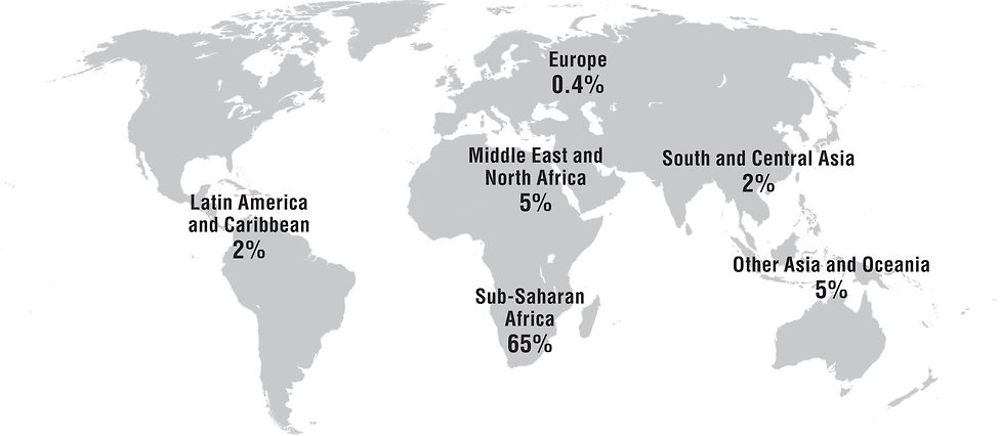
Note: 21% of bilateral ODA allocated was unspecified by region in 2013-14. This share is not represented on the map.
In 2014, 53.4% of bilateral ODA went to Ireland’s top 10 recipients. Eight of its nine key partner countries are among its top 10 recipients, showing that it concentrates its aid allocations on partner countries. Irish support to fragile states was USD 219 million in 2014 (42.2% of gross bilateral ODA).
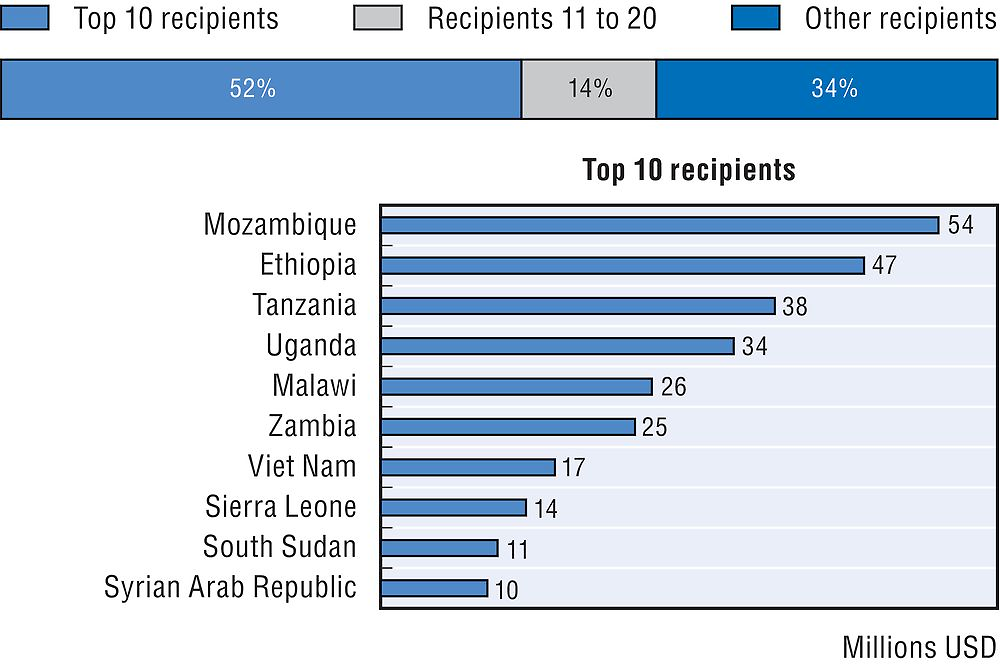
In 2014, 59.6% of bilateral ODA was allocated to least developed countries (LDCs), amounting to USD 309.4 million. The share allocated to LDCs fell slightly from 2010 (when it stood at 65.2%) to 2013 (59.6%) – it has stabilised since 2013. Ireland ranked highest among DAC members for the share of bilateral ODA allocated to LDCs in 2014 (the DAC average was 25.6%).
At 0.18% of GNI in 2014, total ODA to LDCs exceeds the UN target of 0.15% of GNI.
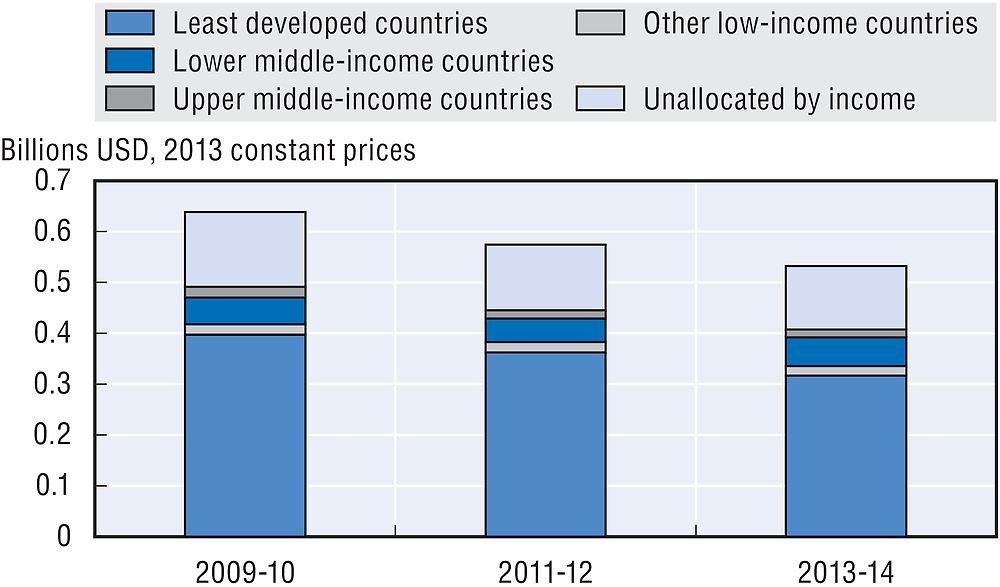
In 2014, 48.6% of bilateral ODA, or USD 254.2 million, was allocated to social infrastructure and services, with a strong focus on health (USD 86.7 million) and support to government and civil society (USD 78.4 million). Humanitarian aid amounted to USD 100.8 million.

USD 228.3 million of bilateral ODA supported gender equality in 2014. Ireland plays an agenda-setting role on gender equality and women’s empowerment and continues to strengthen its mainstreaming approaches through, for example, its Annual Monitoring Report on Gender Equality. In 2014, 49% of its bilateral allocable aid had gender equality and women’s empowerment as a principal or significant objective (up from 28% in 2009 and 44% in 2013), compared with the DAC country average of 34.7%. Ireland’s aid to population and reproductive health, other social infrastructure, and health focuses on gender equality.
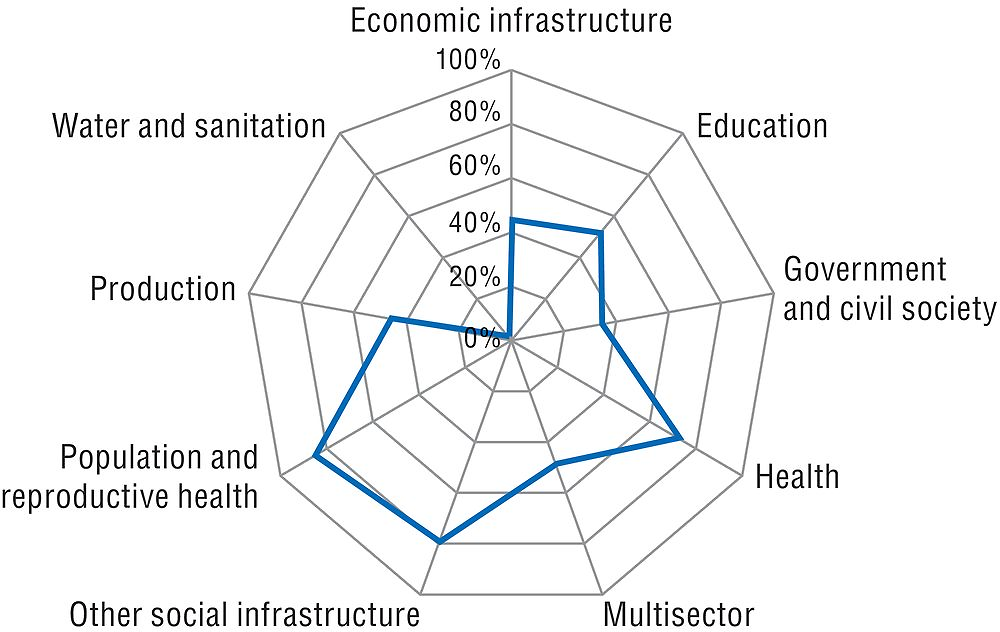
USD 86.9 million of bilateral ODA supported the environment in 2014. Environmental sustainability, climate change and development are growing priority issues for Ireland. In 2014, 18.5% of its bilateral allocable aid supported the environment, compared with the DAC country average of 32.2%. Also, 18.4% of Irish bilateral allocable aid focused on climate change, compared with the DAC country average of 23.9%.
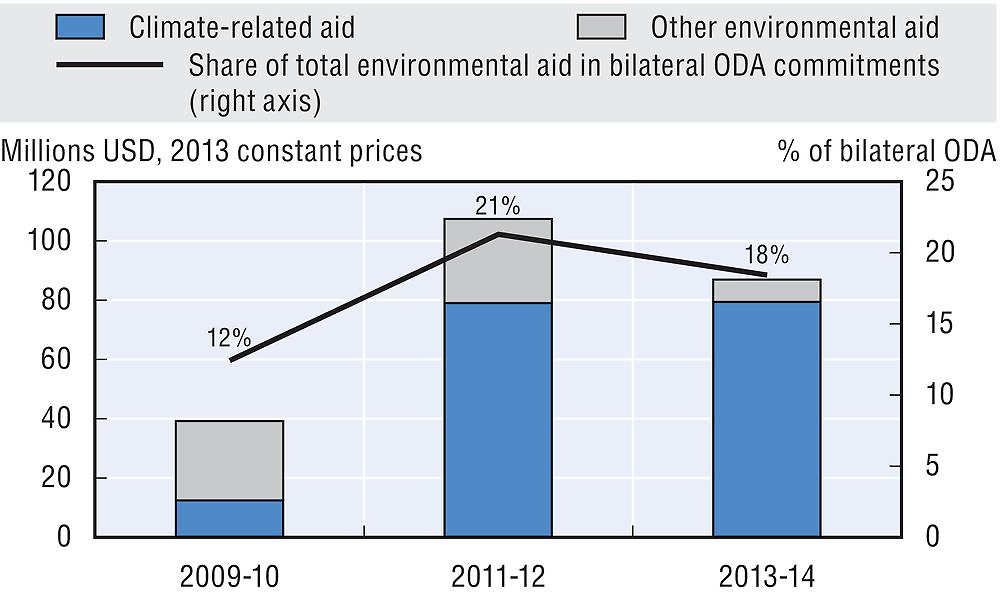
Note to reader: Annex B provides “Methodological notes on definitions and measurement for the Profiles of Development Assistance Committee members”.
